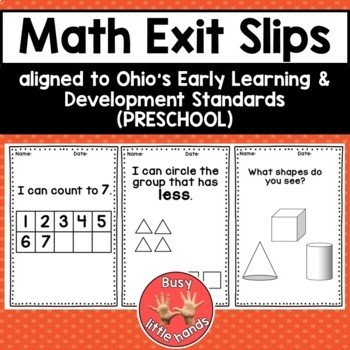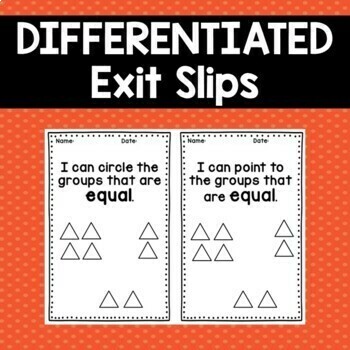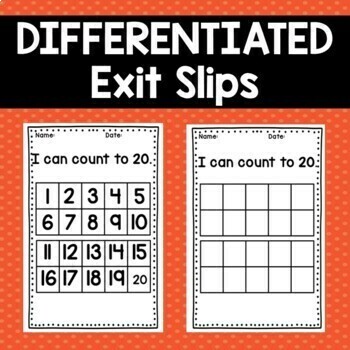Preschool Math Exit Slips for Preschool & Special Education
- PDF
Description
I have created Math Exit Slips based on Ohio's Early Learning and Development Standards. They are quick and easy assessment tools that can accompany a center activity based on a standard. Some are differentiated based on your individual student's needs. Administrators are always looking for ways to determine if students know the content being studied. This ensures that you are tracking their data and it's easy to use.
*****************************************************************************
Customer Tips:
How to get TPT credit to use on future purchases:
• Please go to your My Purchases page (you may need to log in). Beside each purchase, you'll see a Provide Feedback button. Simply click it and you will be taken to a page where you can give a quick rating and leave a short comment for the product. Each time you give feedback, TPT gives you feedback credits that you use to lower the cost of your future purchases. I value your feedback greatly as it helps me determine which products are most valuable for your classroom so I can create more for you. ☺
Be the first to know about my new discounts, freebies, and product launches:
• Look for the green star next to my store logo and click it to become a follower. You will now receive email updates about this store. ☺
*****************************************************************************
Follow me on Social Media and check out my BLOG!





